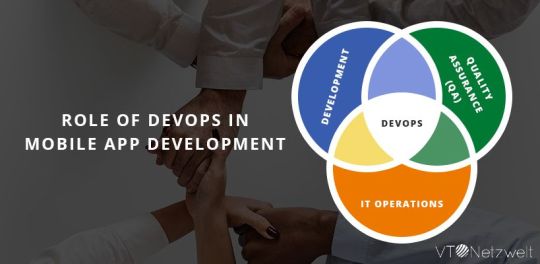Our mobile app development services help our clients unleash the power of mobile, by building world-class iOS and Android solutions.Our expertise and consistency in building & delivering complex mobility solutions and our process-oriented approach, has enabled us to become the trusted partner for various leading companies across the globe. VT Netzwelt provided the best iOS and Android app development services. Our engineering team comprises the best of design, strategy, and technologies to build apps that resonate with the needs of our customers.
Don't wanna be here? Send us removal request.
Text
5 Reasons why customer are leaving your mobile app
Downloading and uninstalling an app is so common nowadays that mobile users keep doing it all the time.
On average, a user spends 3 hours per day on his/her mobile device with 86% of the time interacting with the apps.
Given the huge variety of similar mobile apps available in the market, users don’t think much before leaving one app and trying another.

If any app falls short of the expectations of the users and can’t compete with the other apps, they simply get uninstalled.
Customer Churn is the biggest enemy of any business.
In such a competitive situation most of the popular apps try to be at the top of newer updates almost every week.
So launching an application and getting a huge number of the download doesn’t ensure that your app will continue collecting revenues. Your app can go out of use very soon unless you always keep bringing new features to satisfy the users.
There are many reasons for leaving an app. In the following article, we show you the top 5 reasons that engaged users to leave your mobile application –
Why Customers Leave your Mobile App
Boring Content Most of the apps are avid ones by users because their content has become boring for users.
Unless your app is something people use a lot, for example, Facebook or Instagram, users can get bored with the same features of an app after a week to about a month.
For you to engage your users and attract new you have to keep bringing changes and unique features to your app. Even giants like Facebook and Instagram keep introducing new things to keep users interested in their app.
You can have new activities on your app like any contest, new features, sales, etc. to make people use it. Your users will open your app every day if they know that the app will have fresh prospects each day.
Confusing Interface A lot of users install an app because they’ve been attracted by the description or have been recommended by someone. But as soon as they install and open the app, the confusing interface totally turns them down.
If a person is stuck in figuring how the app works, they will never get around to enjoying its features.
Some apps have a really long process like logging in, setting this and that, add to that low network connectivity and you can be sure about losing 70% of your users.
This problem should be solved in the testing process, where you have to ask people about how they feel about the starting process, etc. so that you can modify it to make the interface easier and more enjoyable for your users.
No Feedback Option Most apps these days have incorporated the feedback option into their interface to ensure that they get direct information about the pros and cons of the app.
Instead of relying on statistical data, it’s best if you can get a rating or some comments from the real-time users.
Most good apps ask their customers for rating on a weekly or monthly basis to ensure that their app is still being liked by users. Whenever they start getting complaints, they make improvements.
Feedback ensures that you get to know what your users want more from the app, which you can introduce in updates later.
If you let your users have an opinion and modify the app according to them, the reasons for leaving application diminishes and you retain your users.
No Loyalty Programs or Reward Systems It’s important to recall that at the other end of the screen, there is a customer who has a constrained amount of time, assets, and enthusiasm to spread crosswise his daily tasks, including how they engage with their smartphones.
If you aren’t compensating clients for investing valuable measures of energy and enthusiasm on your application, rest guaranteed one of your rivals will.
Prizes and loyalty programs are a brisk method to state “thank you” to your most dynamic and engaged customers, and they don’t even cost that much to implement.
Try not to let the “sunk cost” idea of rewards trick you into expelling them from your strategy.
Ordinarily, what you spend on rewards and promoting loyalty programs pays profits later on!
The best way to strategize the Loyalty program is to put yourself in the customer’s shoes. It is much easy to select the prizes and rewards that will encourage your customers to come back on your Mobile app and will keep them engaged.
Read More
0 notes
Link
Without a doubt, the Internet has completely revolutionized our world, and every business (either big or small) is shifting its business online.
The number of web applications is increasing, and so are the security threats. Many people don’t focus on the security of their online business, and such type of web apps allows hackers to compromise user’s data.
So it becomes vital for everyone to understand the importance of online security. There are different types of attacks the hackers can perform to compromise the security of your application and your user’s personal information. Some of the frequent attacks are –
0 notes
Text
Must have features for developing a fitness application
It is no news that most people are crazy about fitness in today’s world. Everyone is concerned about their health and fitness because of widespread consciousness that is raised about fitness.
People are ready to do anything to stay healthy and fit and they are sparing no expenses. A helpful addition to the fitness world is fitness apps that when installed help the users further their fitness quotient.
There are a lot of fitness apps available in the market both on Google Play Store and Apple App Store. It totally depends upon your fitness goals that which app you want to choose.
Fitness apps can be of various types, they can either be simple and measure things like the number of kilometers you’ve run to more complex functions such as calories consumed in a single day, etc. These apps keep a track of food eaten, suggest diet charts and even exercise routines.

Fitness App Development
Everyone is busy nowadays and these apps help you to stay fit. So, if you are an enterprise or a startup looking to get into the healthcare industry this is an ideal time to develop a fitness app.
For developing any application, you need to decide the ecosystem for which you want to get your app developed. There are only two dominating OS ruling the smartphone market –
iOS
Android
For developing health and fitness application, you can either hire experienced iOS developers and Android app developers or you can hire a software development company to get your app developed.
Some interesting facts about the Health & Fitness Industry

The chart above suggests revenues from wearables in billions of US Dollars, and as the forecast for 2019 suggests, wearables business will continue to rise.
According to Statista’s report, the fitness application which analyzes the fitness reports like running status or weight lifted is going to be most popular in coming days.
By 2021 the fitness market will show significant growth, so now it’s the right time for startups to get into the industry. If you’re already thinking about creating a fitness application, let’s have a look at what types of them you might build.
Different types of fitness apps
Activity tracking apps
Workout and exercise apps
Nutrition apps
Activity tracking apps
Activity tracking apps are mostly for people who don’t go to the Gym or are not fond of physical activities, however, nonetheless, want to ensure that they move sufficiently.
Such type of application counts the number of steps and calories burn. With the help of GPS, they could track the distance walked.
Most interesting functions is sleep quality estimation and the smart alarm clock which wake up the user at some point in the REM sleep phase and making the person awake quickly without any problems.
Most of the apps which monitored the user activity can be paired with the wearable device.
Workout and exercise apps
Workout apps have broadest features on the list. As the name implies, they’re centered on workouts. Its foremost purpose is to reveal the user what physical exercise to do and provide an explanation for exactly the way to do them.
There are lots of examples of fitness apps, and their unique features.
However, Fitness applications are divided into 3 types:
Personal training apps
Logbook apps
Workout apps that pair with devices
Let’s start with the first category
Personal training apps
The main idea right here is to provide an exercising complex that may be tailored to each consumer. Customers just need to select a stage of complexity and a set of physical activities they prefer.
Usually, a personal trainer at the gym makes sure people do exercises nicely, however with these applications user don’t need to pay for the health club anymore – 3D models, videos, or just specified descriptions give an explanation for how to carry out each exercise.
6 Week Training, FitnessBuilder Plus, and iWOD Fitness are a few of the most popular apps of this kind.
Logbook apps
Logbook apps are like a to-do listing and basically just store data about workouts. HeavySet, Fitbod, and Stacked are well-known examples of logbook apps. Preset libraries with sporting events and a huge preference for exercising workouts are available for the customers in these apps.
Workout apps that pair with devices
Workout apps are an excellent choice for those sports lovers who can’t consider an exercise without a fitness band or some other type of wearable device. All of the statistics that wearable gadgets accumulate straight away shows up on the display of the cell phone.
Nutrition apps
These application help user to control their weight by way of counting calories consumed and burned, controlling water stability, and inspiring healthful ingesting habits. They can also assist to track how much coffee they drink and how to hold body fat, weight, and percentage in control.
Setting personal goals is the main consciousness of such apps. If a person has a hard time sticking to healthy nutrients, the app will assist to create grocery buying lists, and even gather healthy food recipes!
A few of the best-rated applications of this type are HealthyOut, Calorie Counter, Food Dairy, and MyPlate Calories Tracker. Read More
#MobileAppDevelopmentCompany#AndroidAppDevelopment#iosappdevelopmentcompany#Fitnessapplicationdevelopment#VTNetzwelt
0 notes
Text
Role of DevOps in Mobile App Development
Over the past 5 years, Android and iOS devices have become the primary source of accessing the internet for millions of people around the globe. These trends have scrambled many industries to adapt to the shift in business application users by developing a mobile app for their business application.
During the early years of this shift, IT industry focused on meeting the market demand and businesses focused on creating a market presence and they overlooked to focus on app development due to costs, security, maintainability, code quality, etc.
Presently as the underlying surge has settled down, it’s a great opportunity to focus on these issues and embrace new methodologies to lessen cost and increase quality. It is high time for companies to embrace the mobile-first approach and focus on building their business application for both iOS and Android ecosystem.

You can hire a freelancer or in-house resource or a mobile app development company offering both Android app development services and iOS app development services.
In this blog, we will be discussing the DevOps approach in Mobile App Development, the major challenges faced, and best practices to overcome those challenges.
What is DevOps?
DevOps is a modern software engineering approach which focuses on effective collaboration between project managers, developers, operations staff while aligning with enterprise business objectives.
The conventional techniques utilized before DevOps approach lacked powerful coordinated effort between various departments of Software Development which eventually lead to additional time in development, more holes in customer pocket, and results in customer dissatisfaction.
Benefits of Adopting DevOps
DevOps has brought the development and operations team on the same page. Before DevOps, developers used to write the complete code and then convey it to the operations team. With DevOps process, responsibilities are distributed equally among different teams with a single goal that each team has clear visibility of application performance.
Adopting DevOps in your Enterprise offers –
Continuous Software Delivery Enhanced Customer Experience Faster Resolution of Bug Fixes/Problems Higher Employee Engagement Faster Delivery of the Product More Stable Environment for Easy Deployments More Time for Innovation Increased Efficiency
6C’s of DevOps Adoption

Continuous Planning Continuous Planning refers to bringing your entire team like the developers, business analyst, testers, and operations team on the common platform to determine the scope of the application in the preparation of a release plan.
Continuous Integration Continuous Integration (CI) address the developers community by focusing on error-free builds following the best practices and standards of the version control.
Continuous Testing Testing is an important part of Software Development Lifecycle. Testing ensures the quality of the product delivered to the customer. Continuous Testing in DevOps emphasis on automation of all the phases of Software Testing.
Continuous Monitoring Continuous Monitoring ensures that the application is performing as desired and the production environment is kept stable no matter the frequency of changes without any human interaction.
Continuous Delivery Continuous Delivery is the practice that ensures that the code is deployed to the production environment by delivering every change to a production-like environment.
Continuous Deployment Next step of Continuous Delivery is Continuous Deployment. Every change that passes the automated tests through Continuous Testing is deployed to the production environment automatically.
Mobile DevOps Adopting DevOps in Mobile App Development can be a game-changer for many organizations. DevOps ensures that all different teams become more productive in terms of execution.
However, adopting DevOps is not an easy process as it requires a lot of technical and business decisions but once implemented successfully can bring value to the organization in terms of client satisfaction, increased efficiency, and increased revenue.
To adopt a continuous mobile DevOps workflow, all the bottlenecks and potential problems need to be identified at first.
Challenges in Adopting DevOps For Mobile App Development
While the basic principles of adopting DevOps for web apps and mobile apps are the same, still there are certain challenges for adopting DevOps in mobile app development. These challenges include –
Multi-Platform Support Mobile applications have multiple target environment. Most of the mobile apps target multiple devices, OS versions, hardware specifications and more.
Apple App Store and Google Play Store Generally, a mobile app cannot be deployed directly to a mobile device. It has to go through the App Store for iOS and Google Play Store for Android. The app goes through a submission and review process of the App Store.
Pull Deployment Model Traditional deployments operate on a push model where a new version of the application can be pushed whether it is a web app or a cloud-based app. However, the process of updating a mobile app is a pull process as it is up to the user to choose whether or not he/she wants to update the app.
Mobile App Testing Nothing is worse than a 1-star rating for your mobile app. Unsatisfied customers can publically harm your brand through the medium of the App Store or Play Store. So it becomes extremely important for you to do rigorous testing using functional, usability, and performance testing techniques for your app.
Read More
#DevOps#MobileAppDevelopment#AndroidAppDevelopment#iosappdevelopmentcompany#Appleappstore#Googleplaystore#VTNetzwelt
0 notes
Text
Exploring the future of mobile app development
The birth of gadgets like smartphones, tablets, smartwatches has led to an explosion of developers and freelancers working in the mobile app development industry. Mobile App Development Industry is continuously broadening and emerging.
According to recent statistics, it is clear that there are more than 2.5 billion smartphones in the world and this figure is likely to reach 2.87 billion by 2020.
In 2017, there were 178.1 billion downloads of apps worldwide and this figure is projected to reach 258.2 billion in 2022. VT Netzwelt provided the best Mobile app development services, is certainly witnessing active growth every year.
Right now the app industry is being dominated by social media and gaming apps. Apps, be it an iOS app or an Android app, have become a necessity for all mobile users.

With apps becoming such a significant part of everyone’s life, it is easy to wonder about the future that lies in store for mobile apps. The fact is that mobile apps, like any other technology, will be driven by advancements.
Below are some trending technologies which will make a revolution in Mobile application development.
Internet of Things and mobile-connected smart objects
Mobile application development is not only limited to smartphones. Presently and in the future, the mobile application will control and manage the gadgets and devices which are around us.
Internet of Things (IoT) will be the mainstream from the education sector to the healthcare sector and from smart offices to smart homes. Mobile App Development for IoT will lead to greater control over a range of physical objects.
Read More
#AndroidAppDevelopment#MobileAppDevelopmentServices#iosAppDevelopmentCompany#iphoneAppDevelopmentCompany#MobileApplicationDevelopmentCompany#AndroidAppDevelopmentCompany#MobileApplicationDevelopment#MobileAppDevelopmentCompany#VT Netzwelt
1 note
·
View note